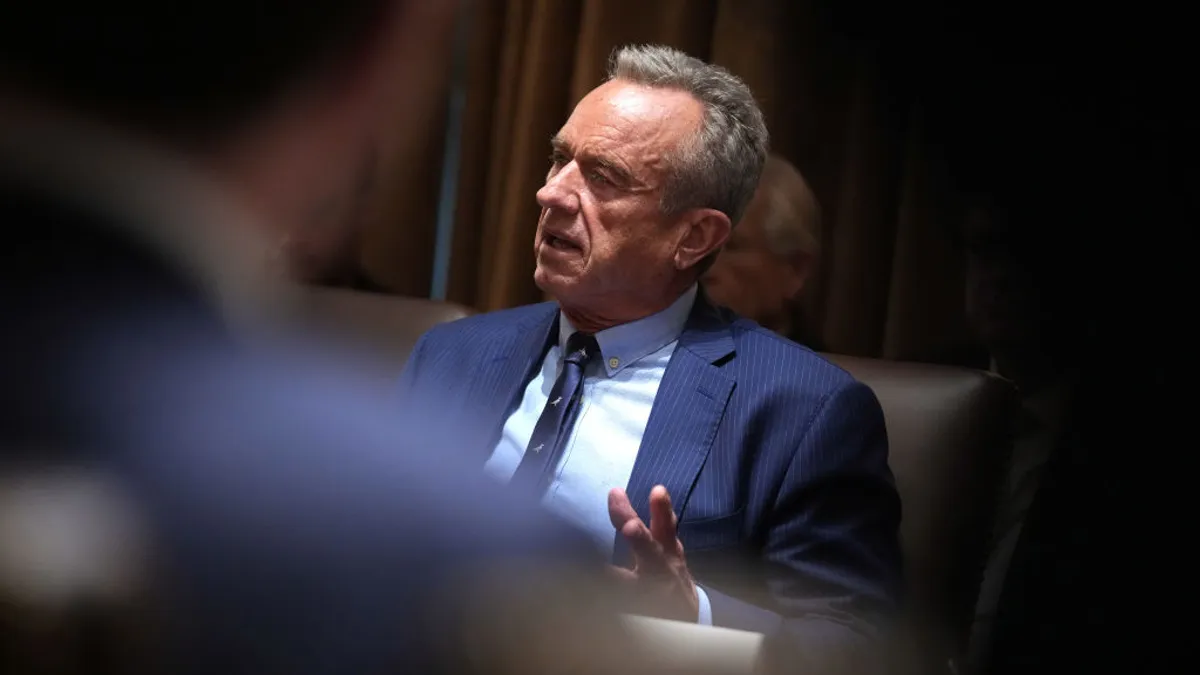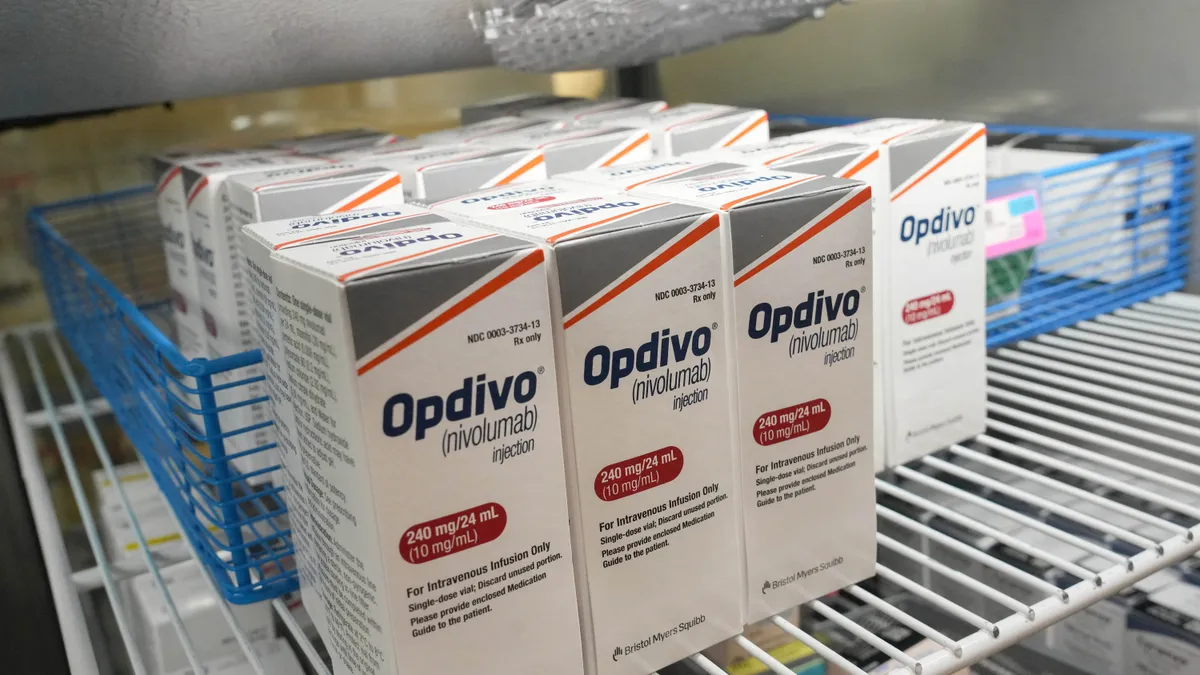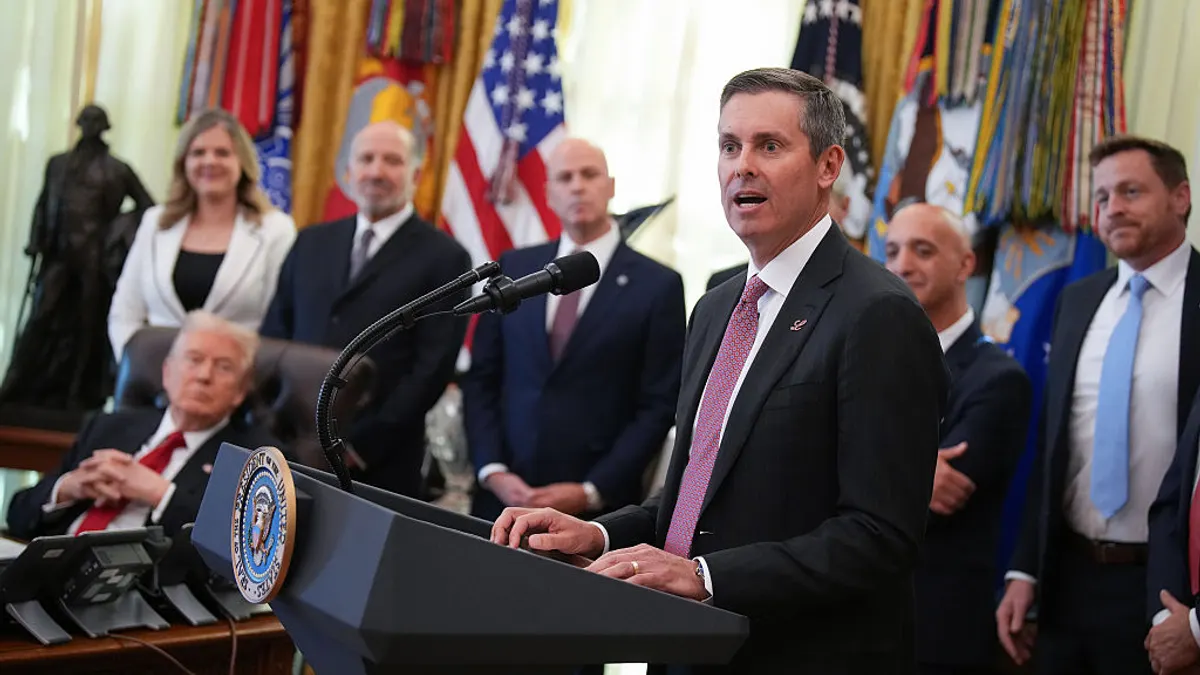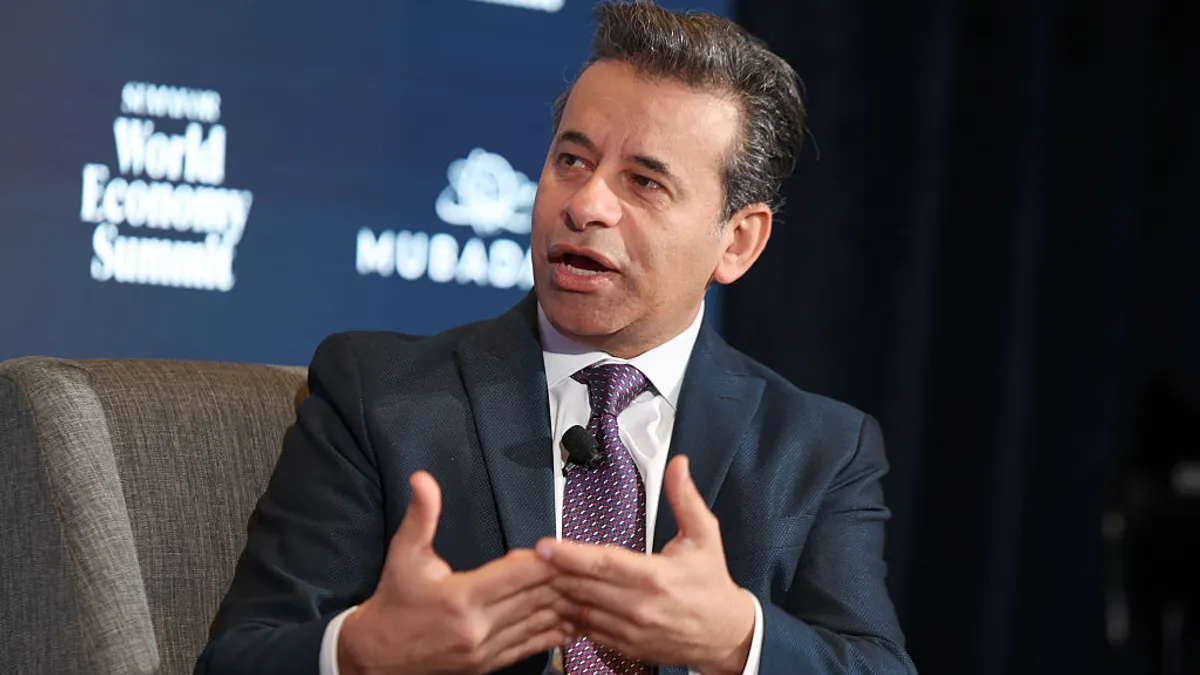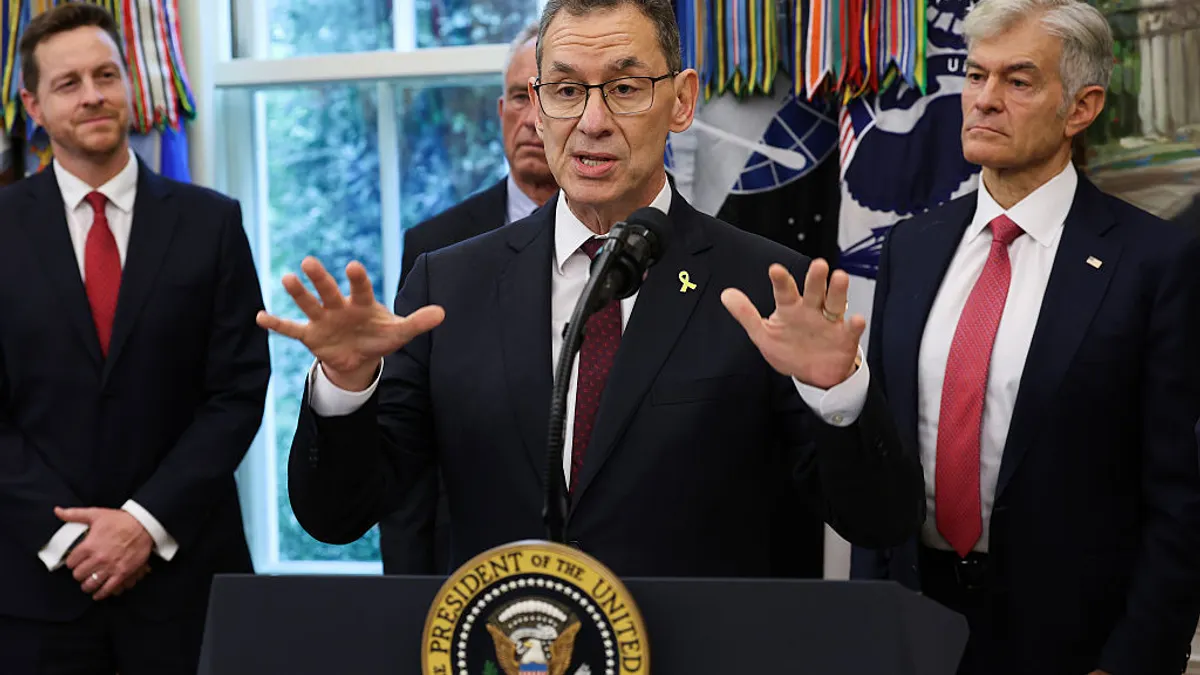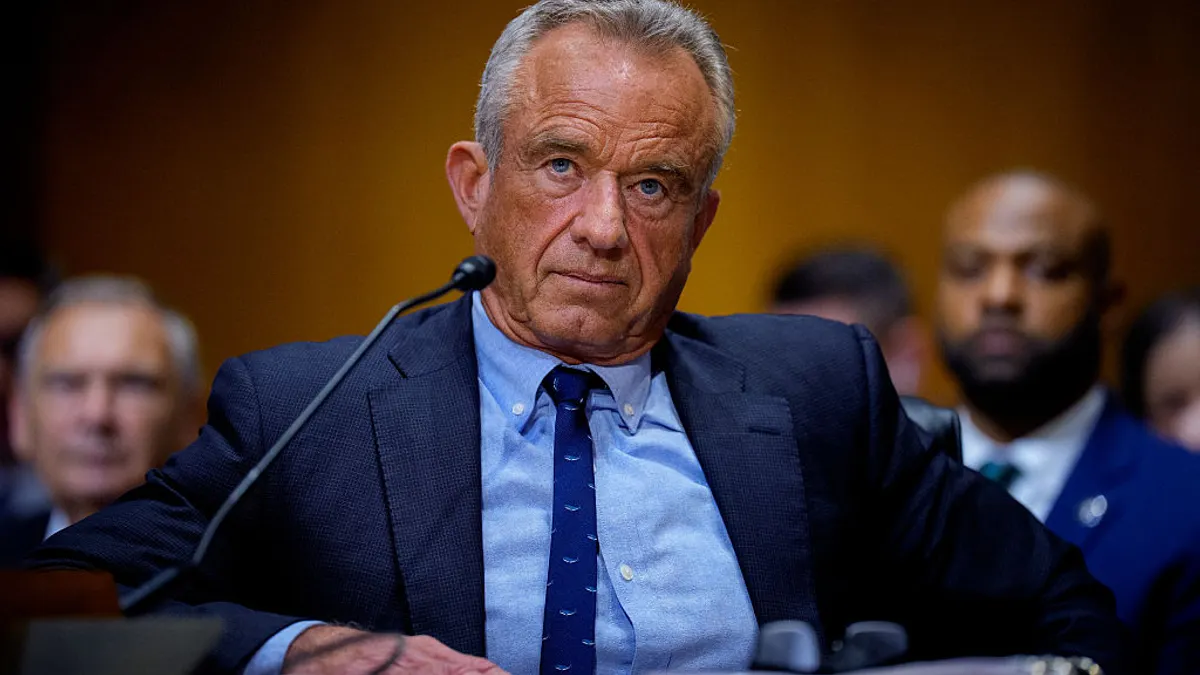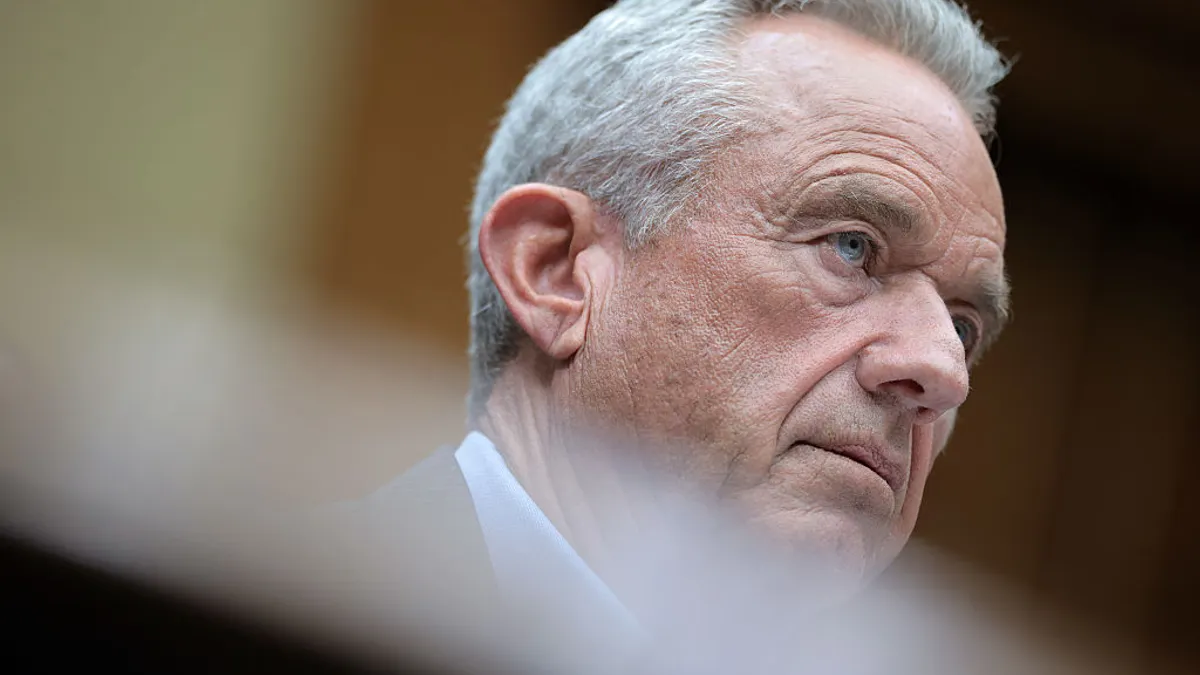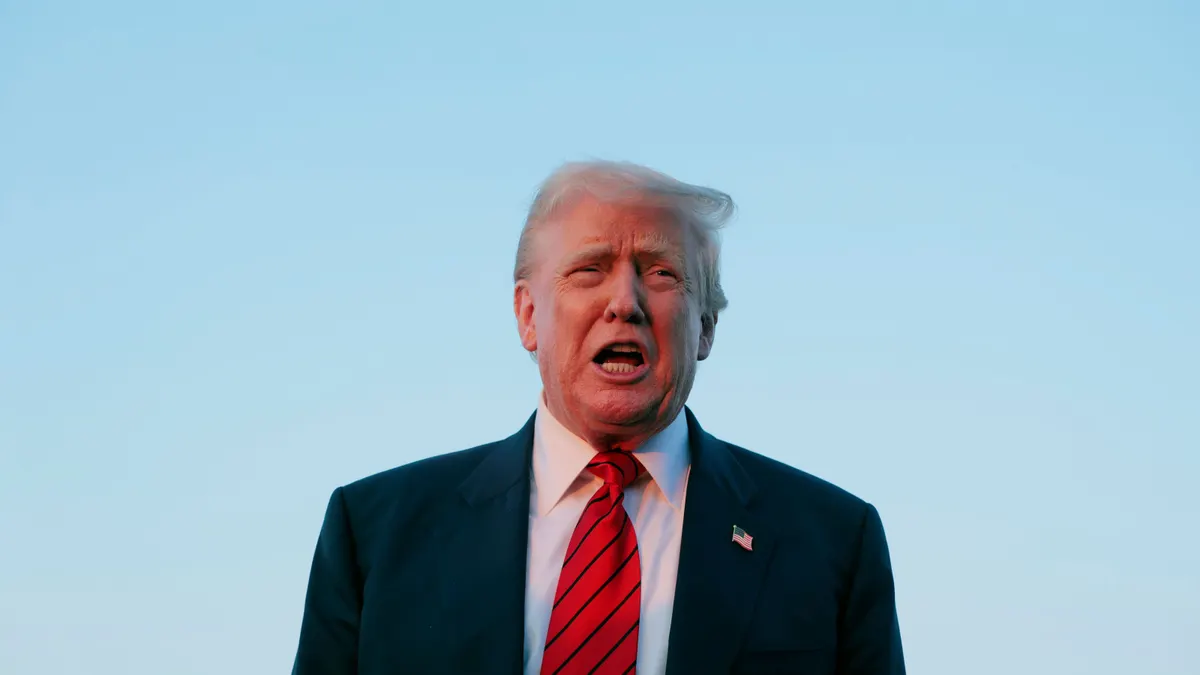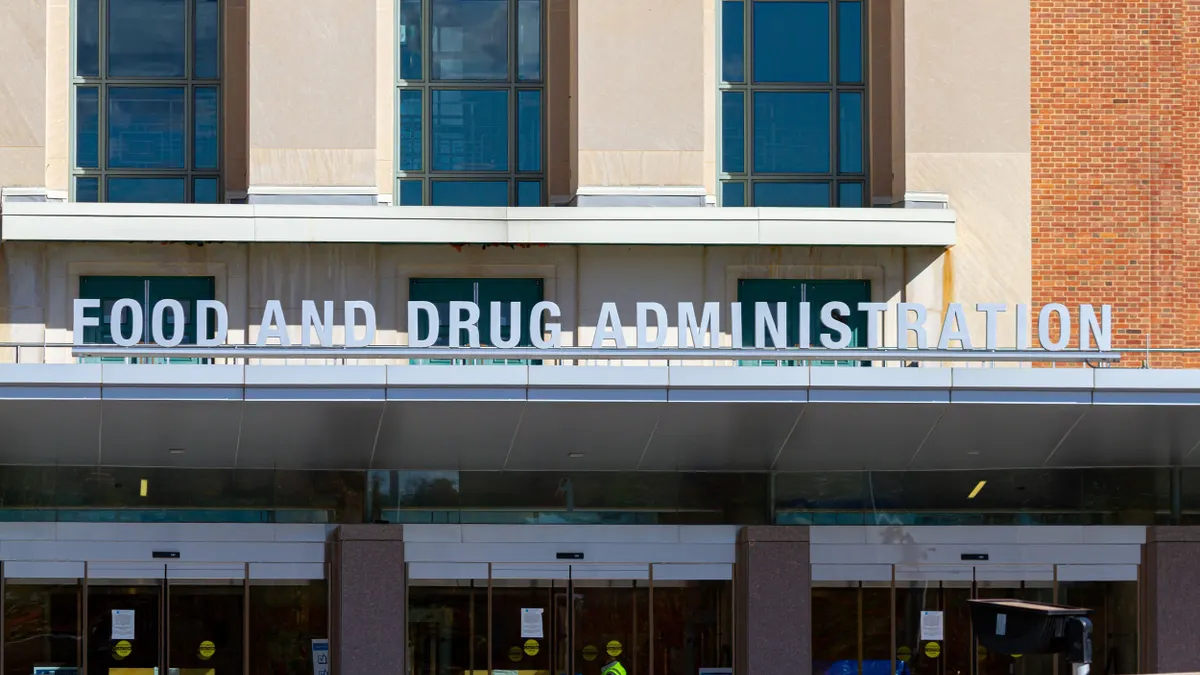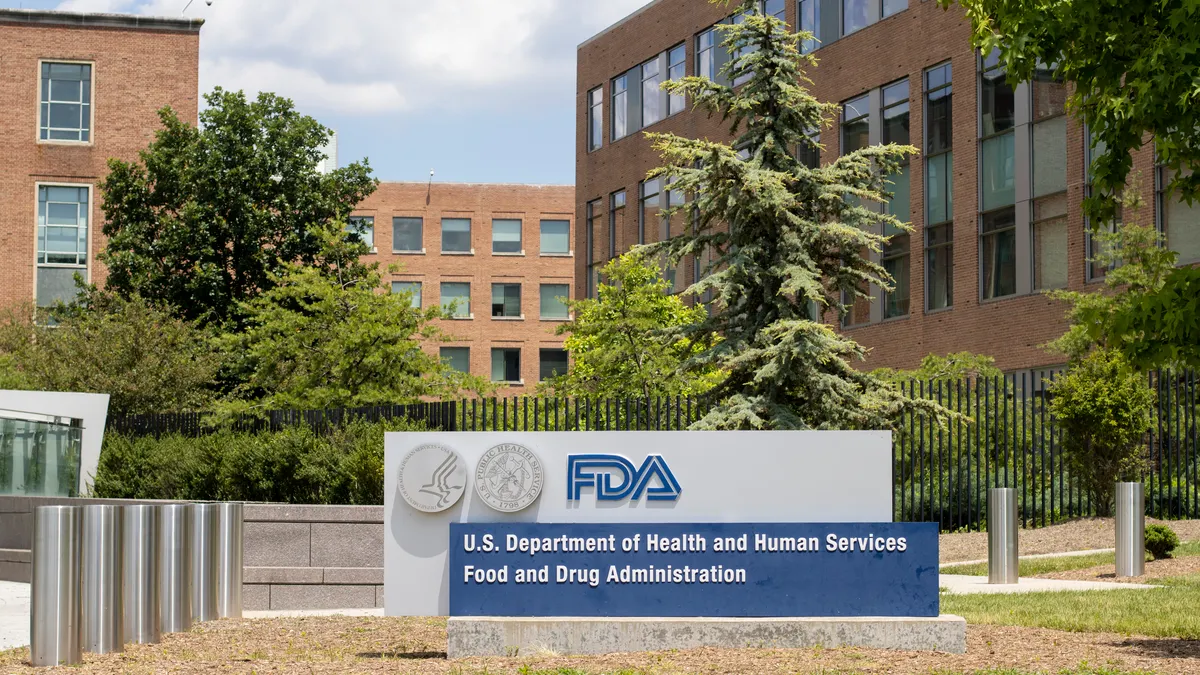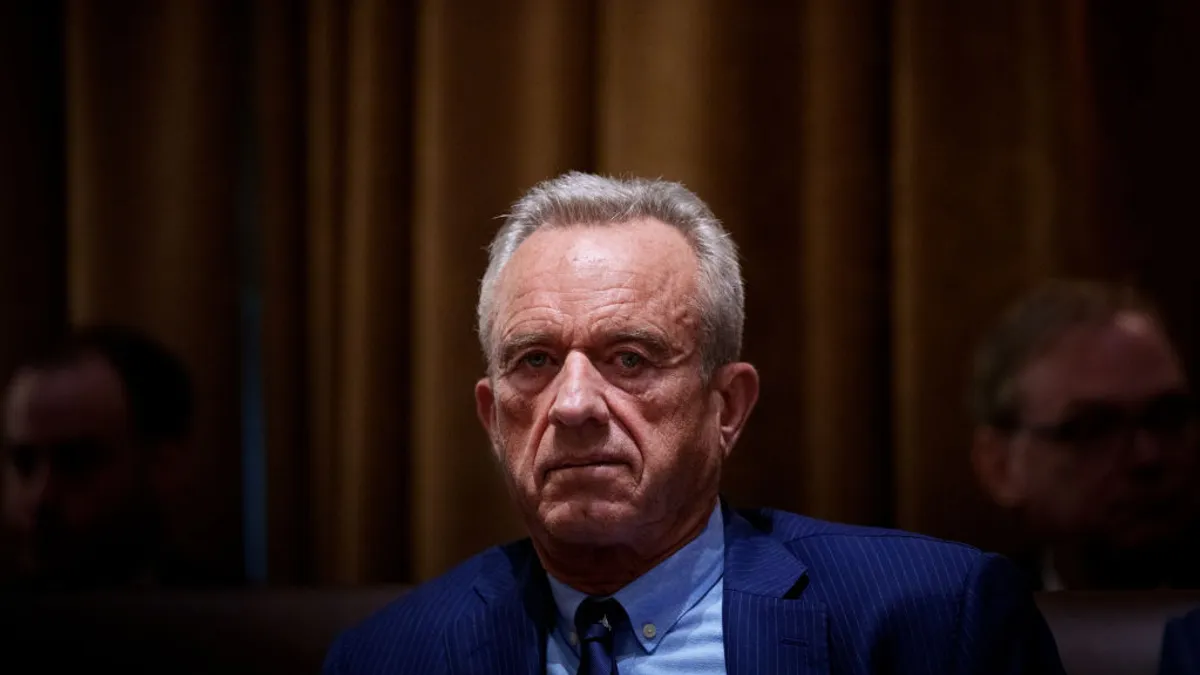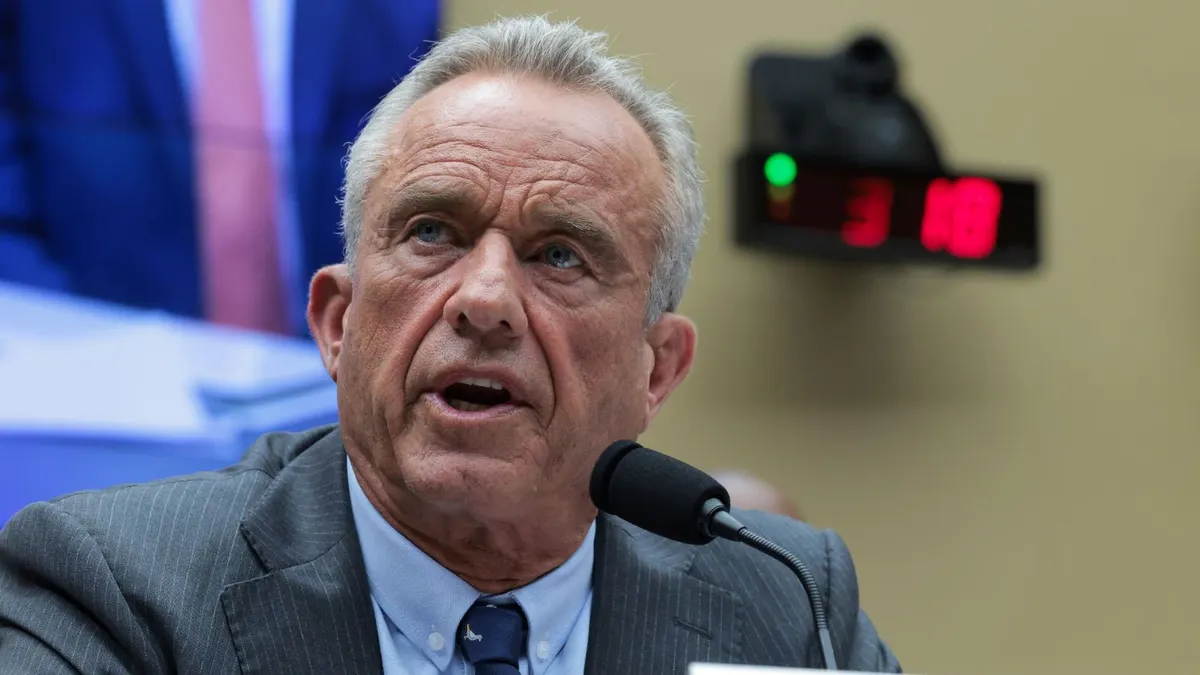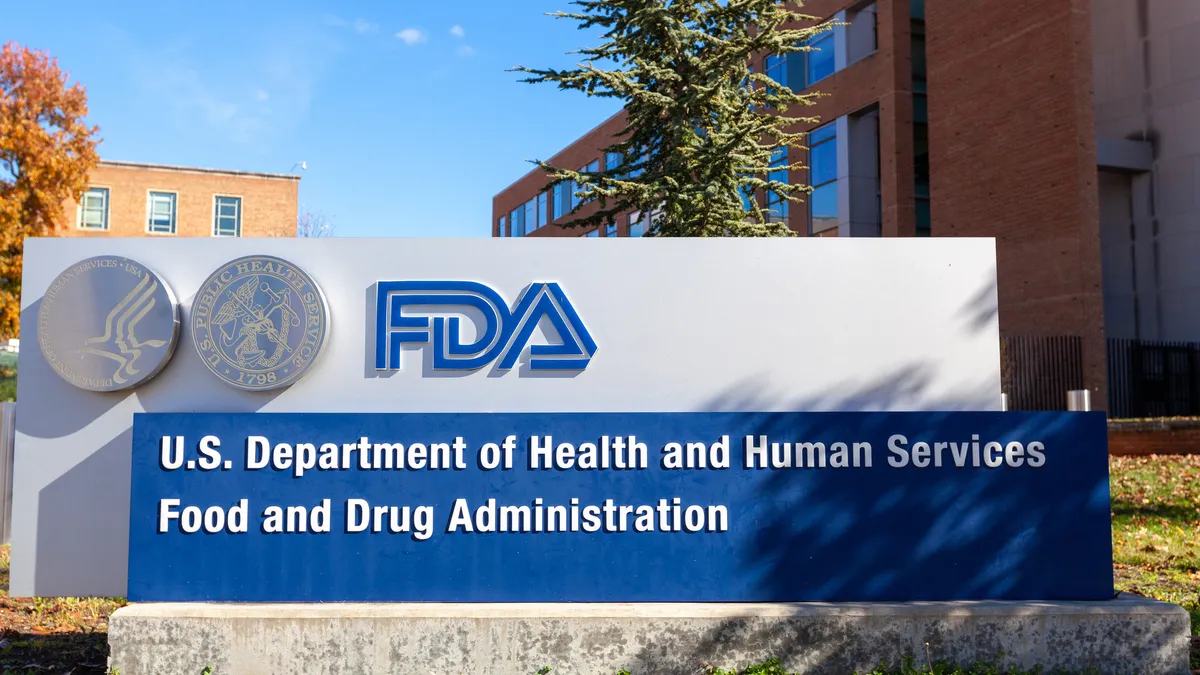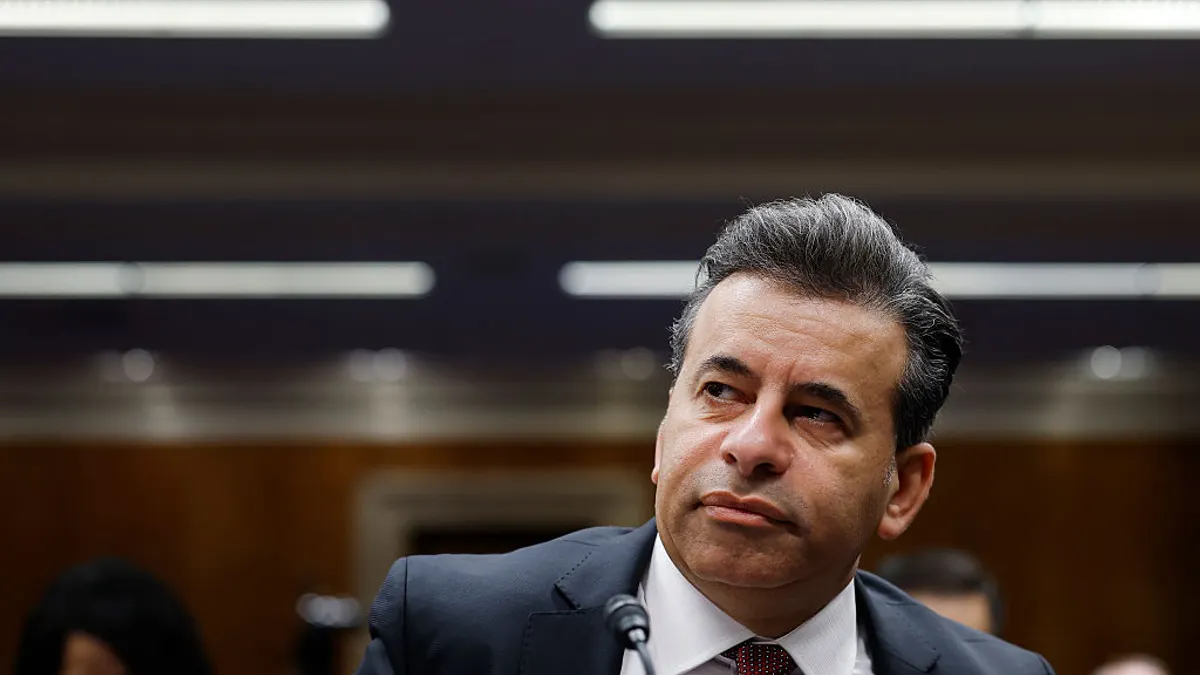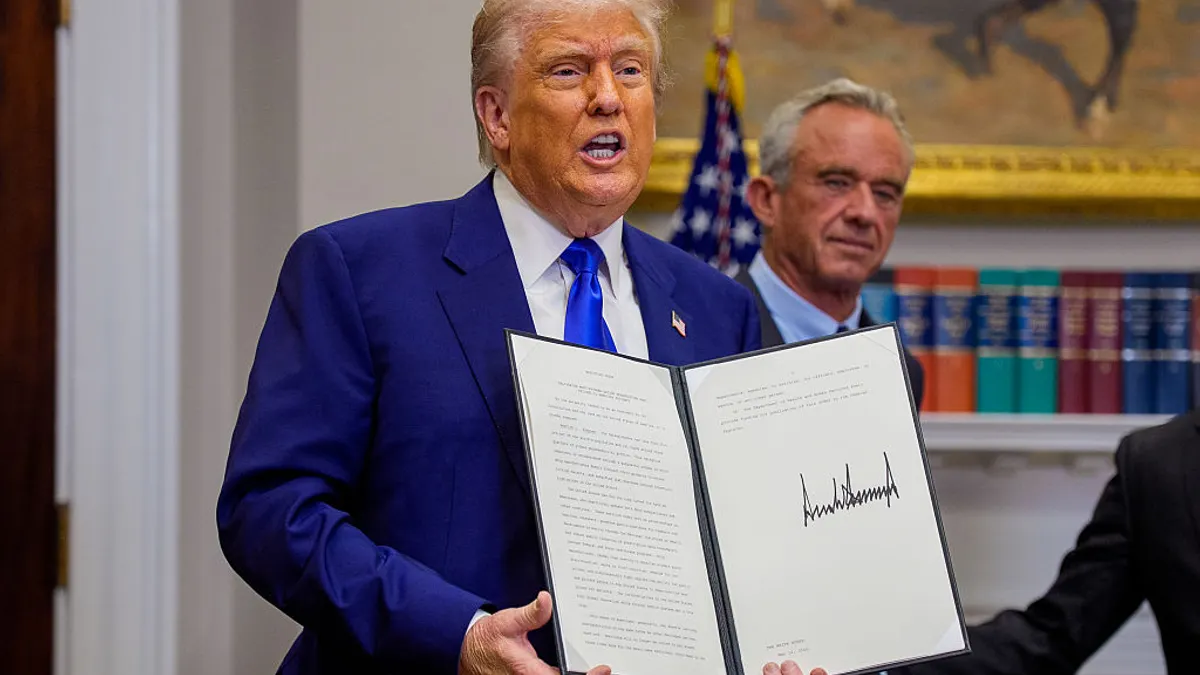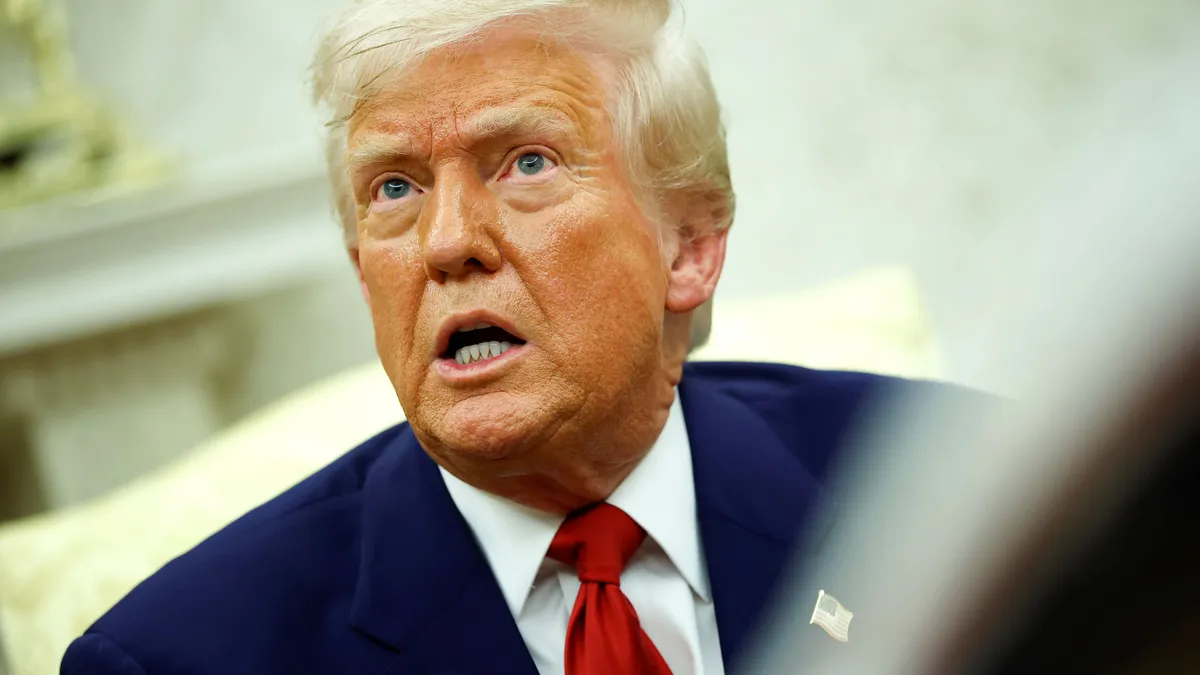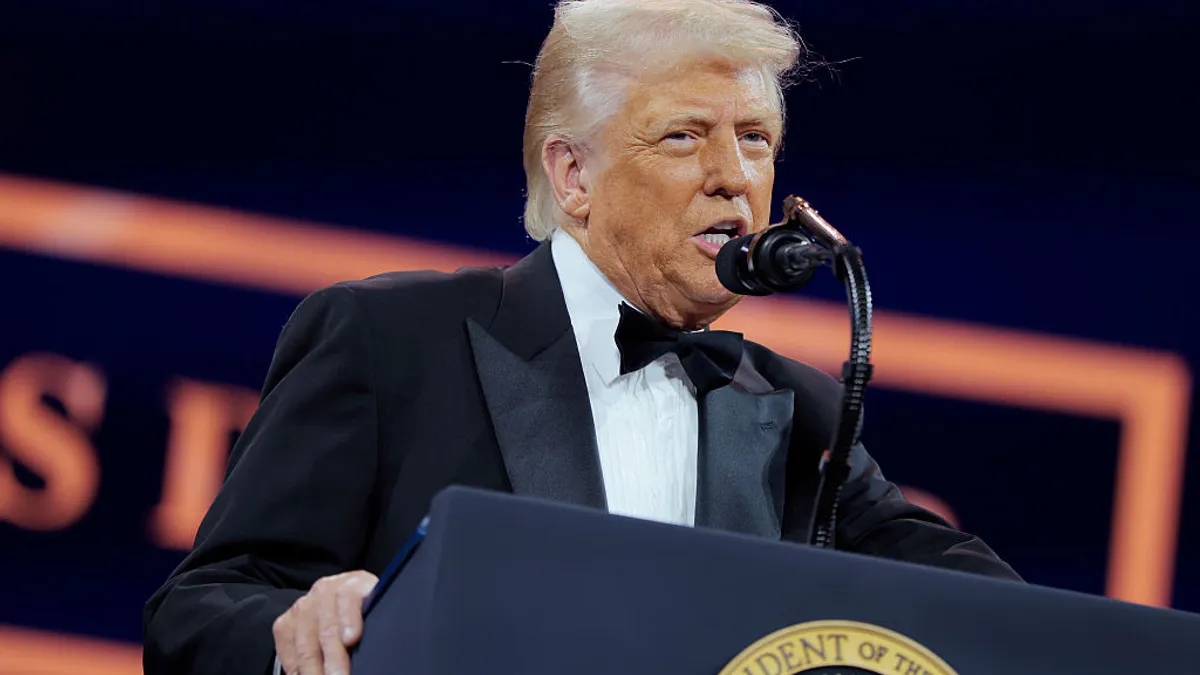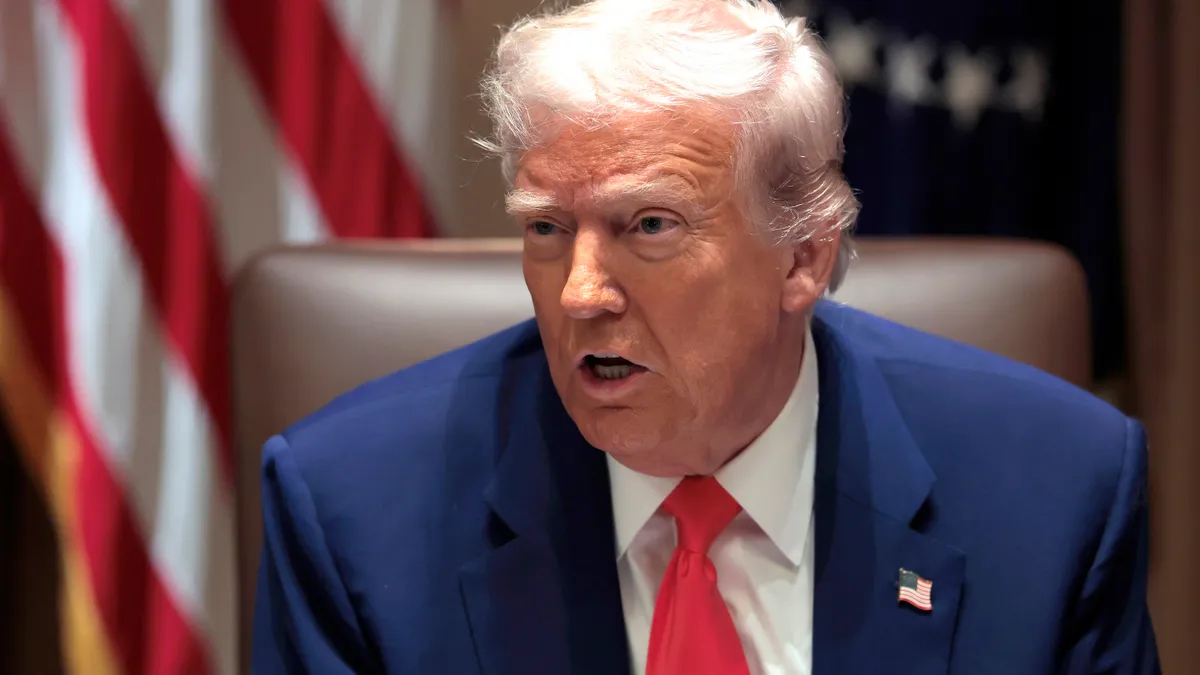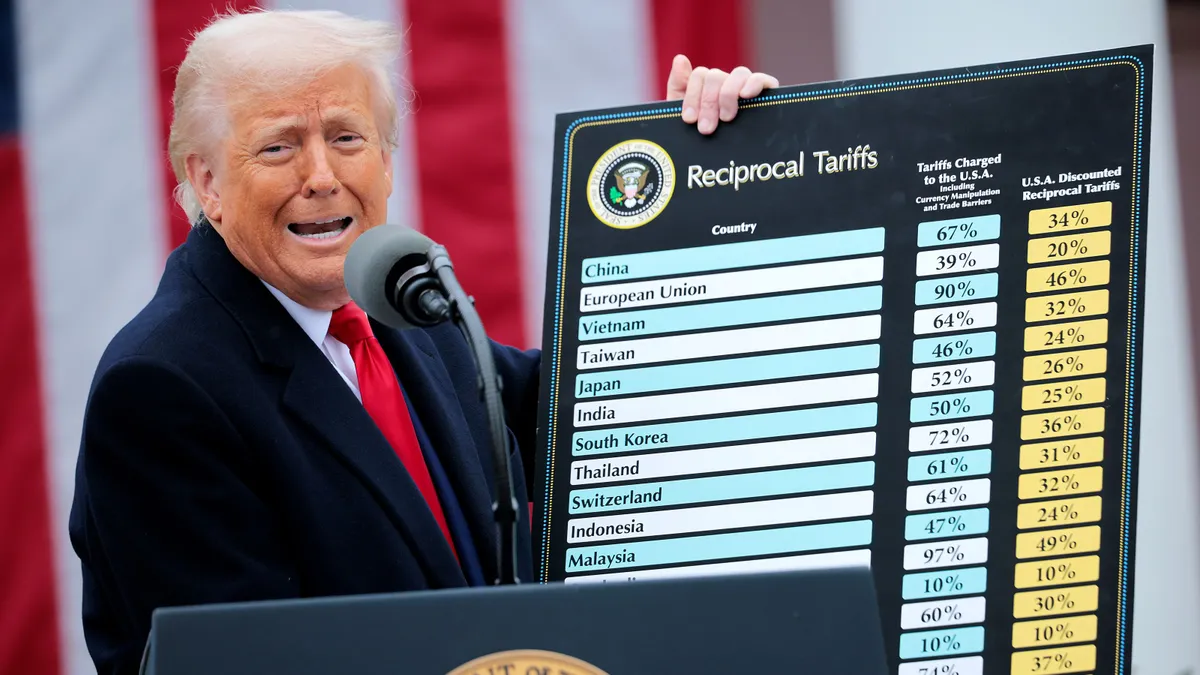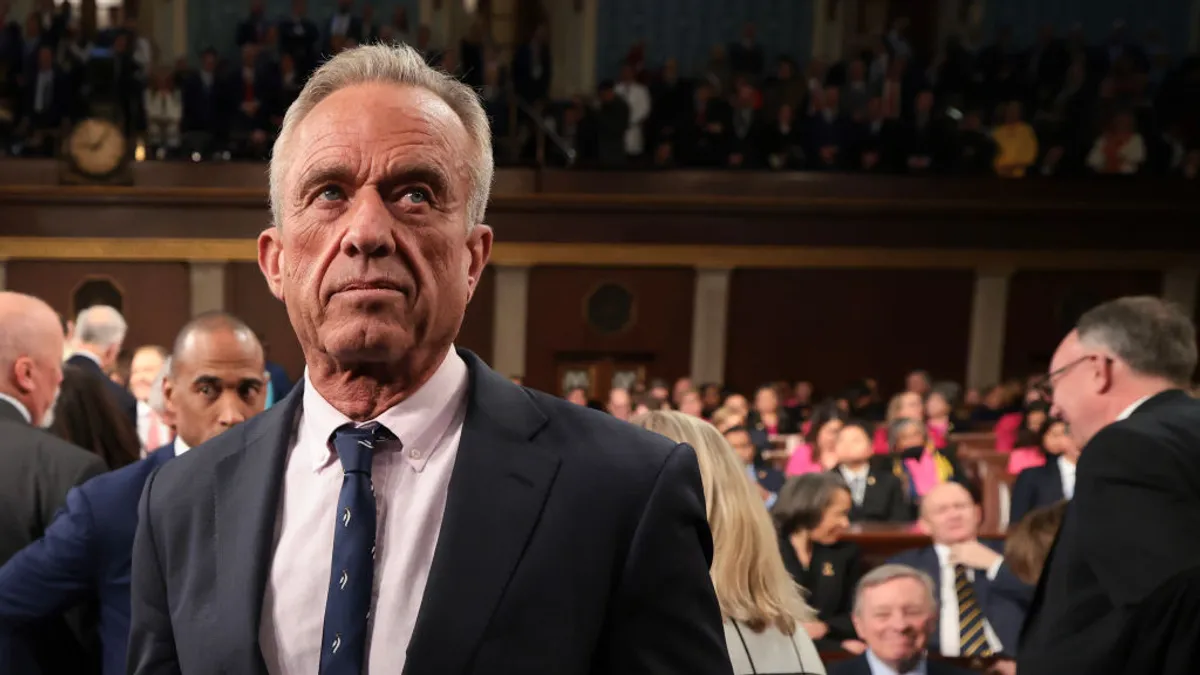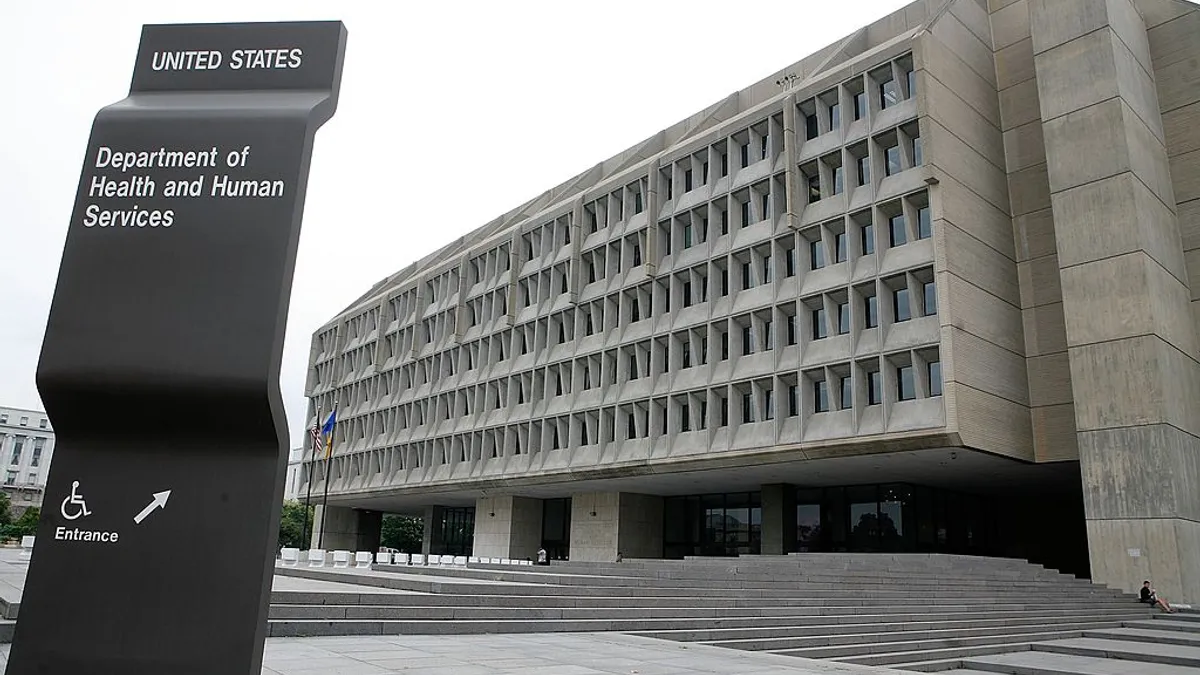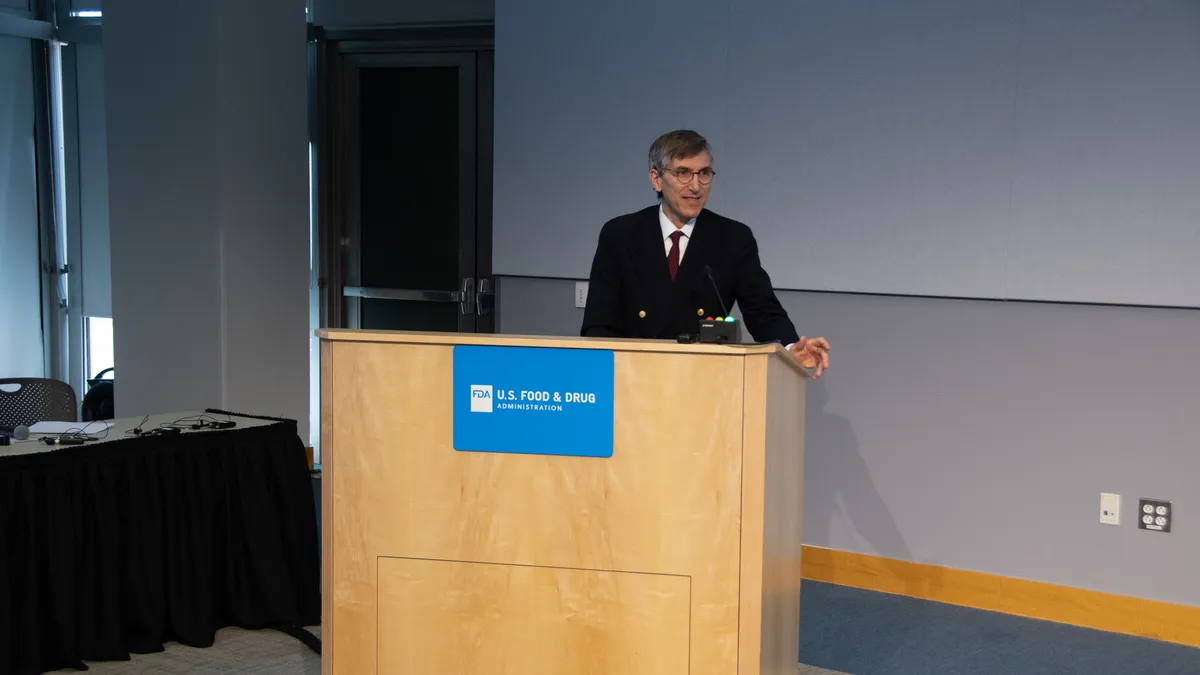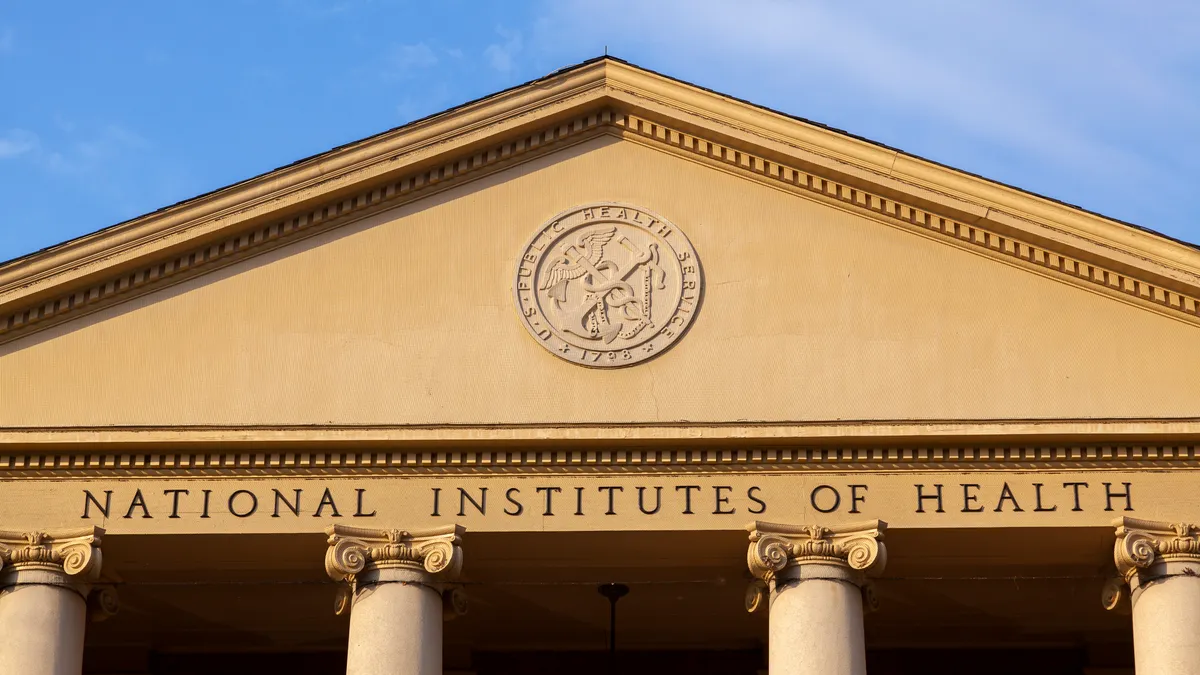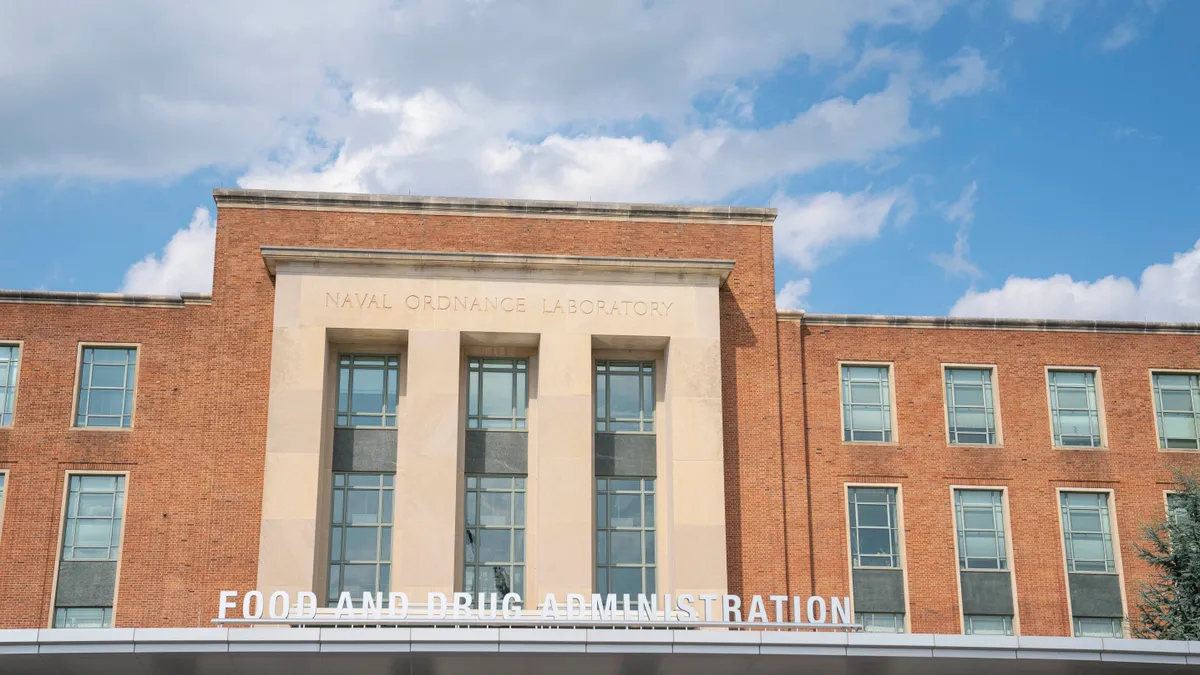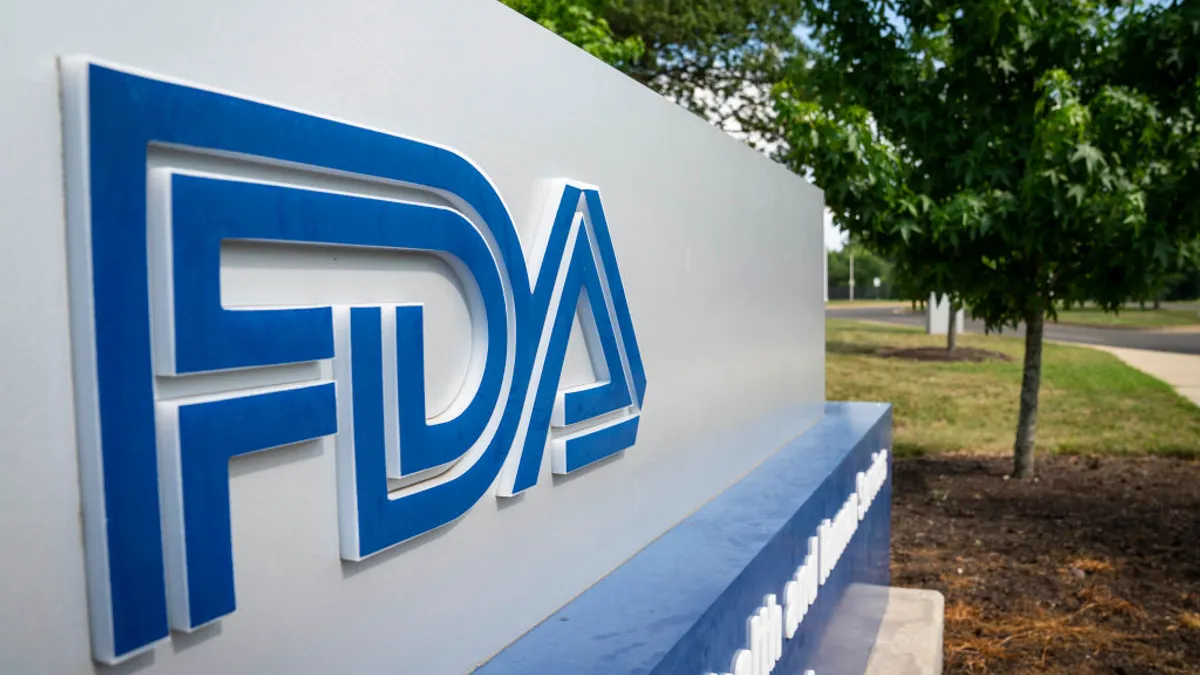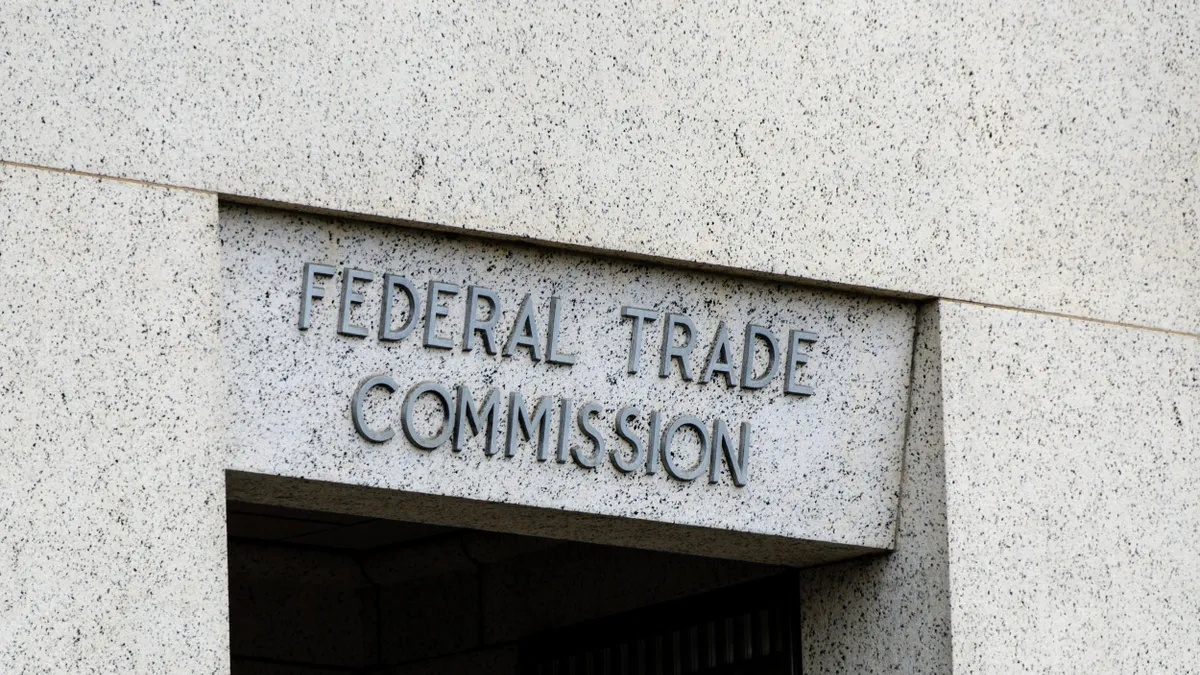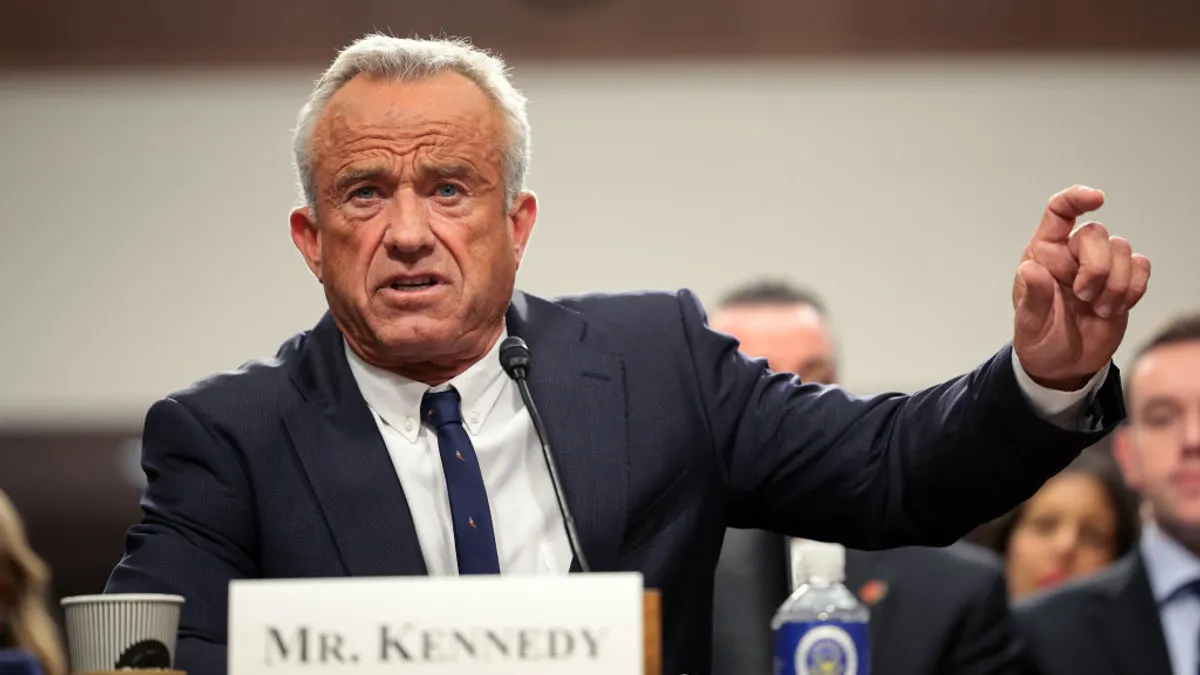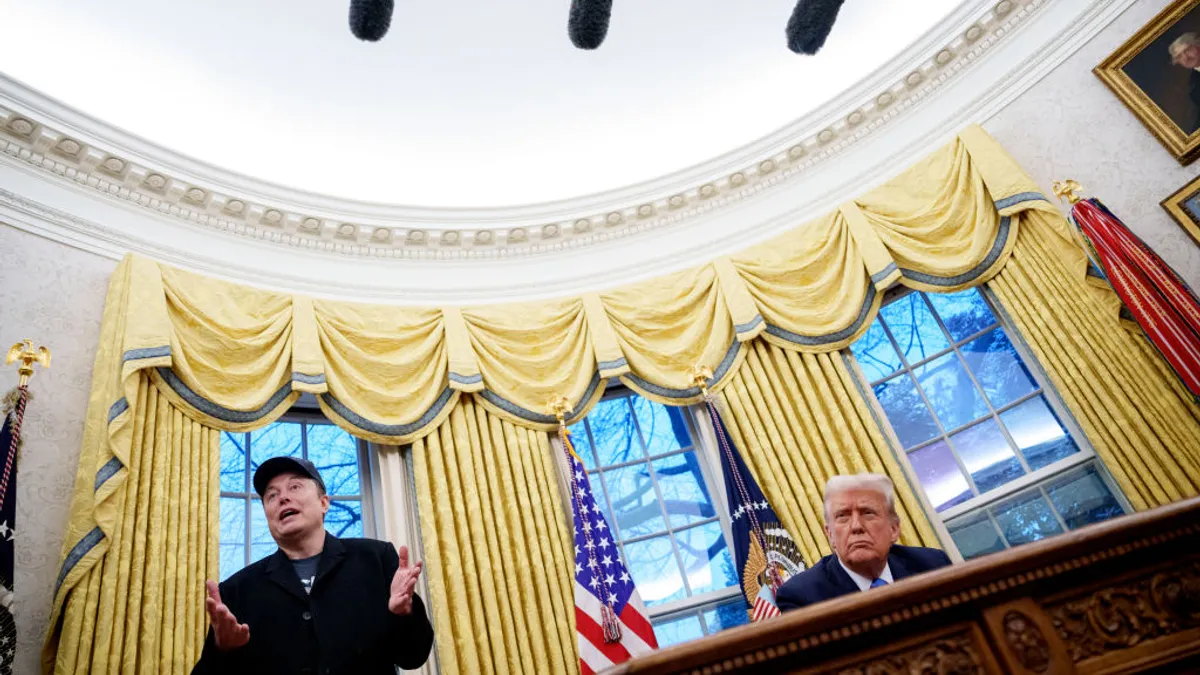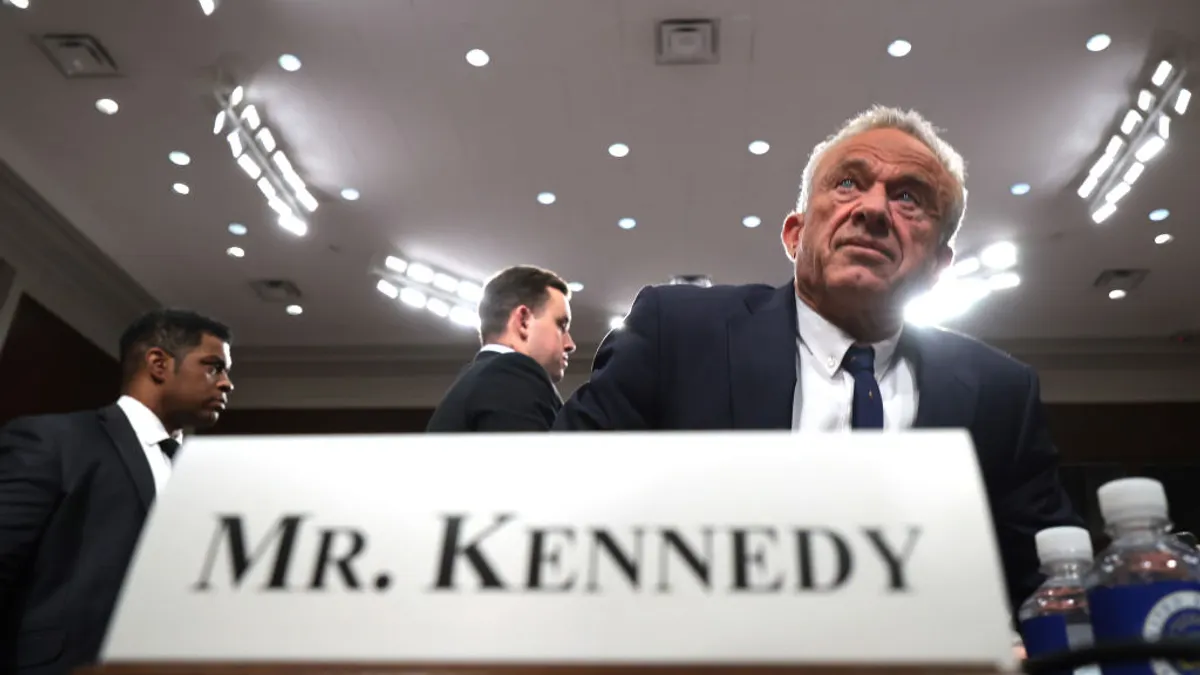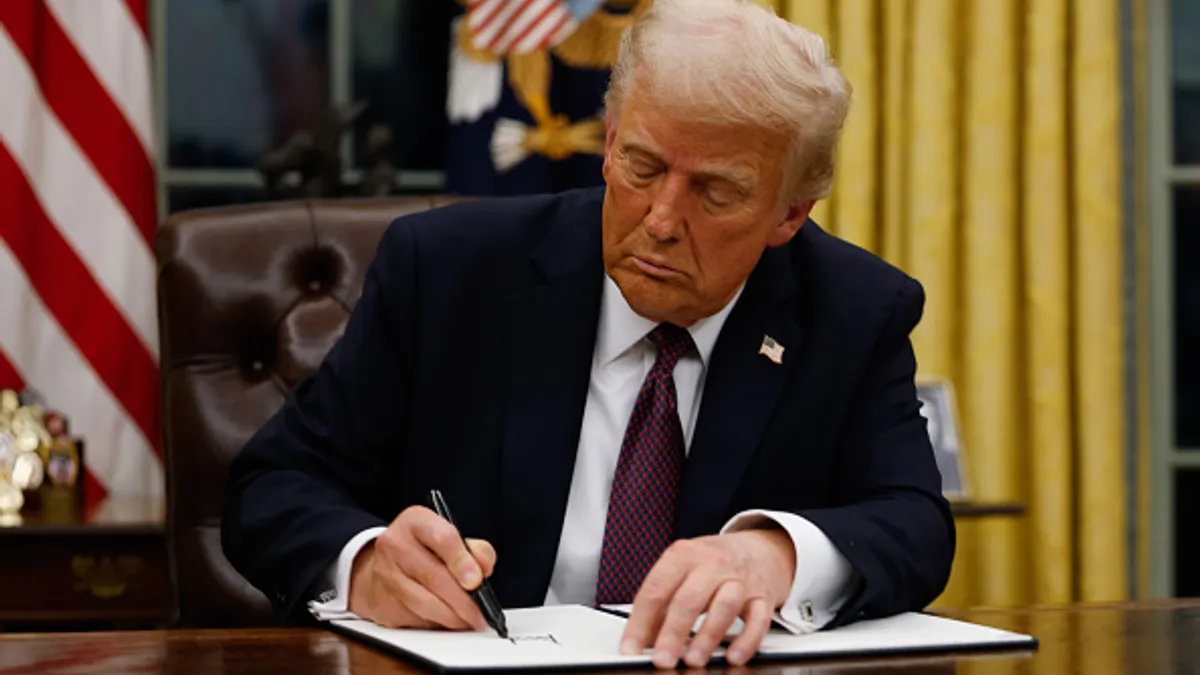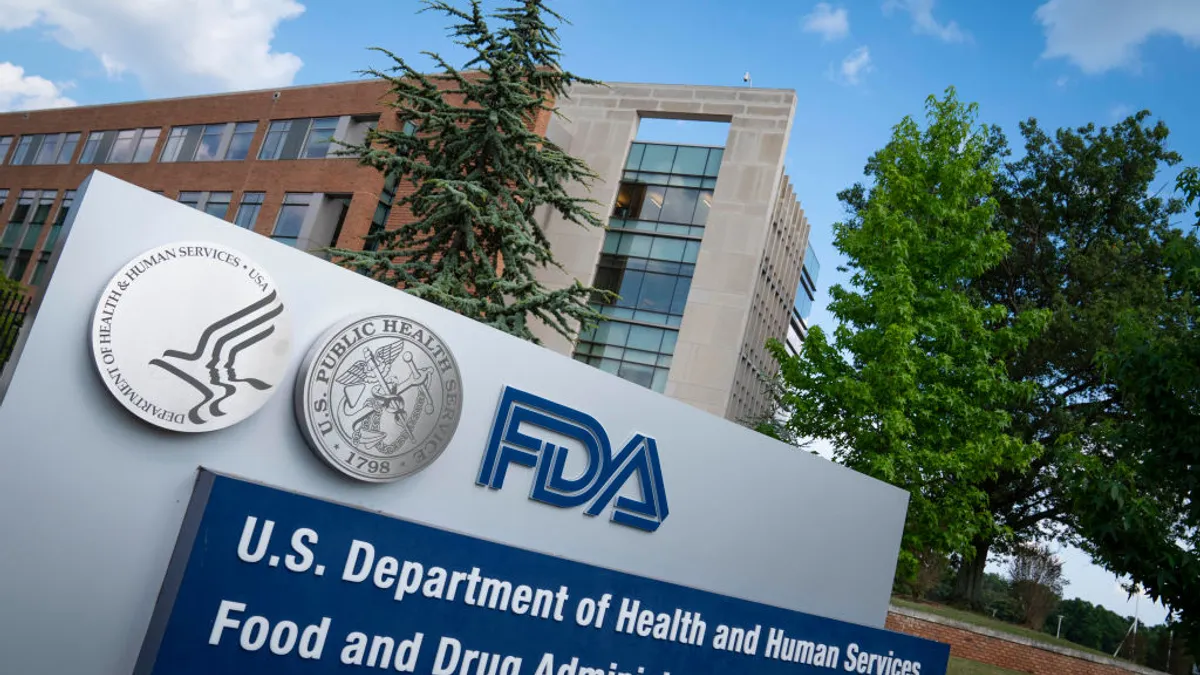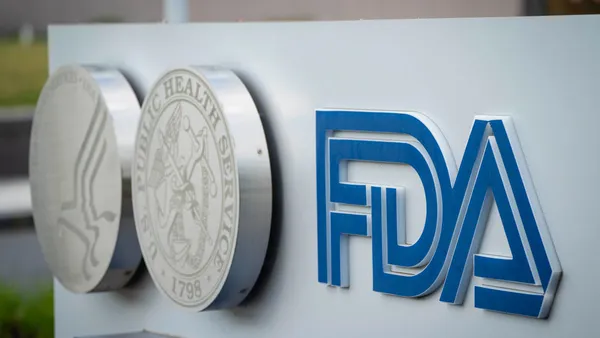Health secretary Robert F. Kennedy Jr. plans to dramatically reshape the department he leads through mass layoffs and consolidation of the sprawling agency that provides health insurance to tens of millions of Americans, responds to disease outbreaks and regulates medical products.
About 10,000 full-time employees at the Department of Health and Human Services will be let go under Kennedy’s plans, which were announced Thursday morning. The planned terminations are in addition to the roughly 10,000 or so employees who have already left HHS through other Trump administration efforts, such as offers of early retirement. All told, the department will shrink in size by about 25% to about 62,000 full-time employees.
HHS will also centralize many functions that are currently spread out across the department, consolidating work involving human resources, information technology, procurement and policy. The number of HHS regional offices will be cut in half to five, and the department’s 28 divisions will be reduced to 15.
“This will be a painful period for HHS as we downsize,” Kennedy said in taped comments posted to his official account on X. “We're keenly focused on paring away excess administrators while increasing the number of scientists and front line health providers."
As examples, Kennedy noted how, across HHS, there are more than 100 communications offices, 40 IT departments and nine HR divisions. “In many cases they don't even talk to each other,” he added. “They're mainly operating in silos."
Among the 15 consolidated divisions will be a new “Administration for a Healthy America,” which will merge several different offices and administrations into a new unit that handles issues like maternal and child health, HIV/AIDS and environmental health. Kennedy, in throwing his support behind President Donald Trump during the election, has championed the “Make America Healthy Again” movement, a broad political coalition that’s focused on the rise of chronic disease in the U.S.
“We aren't just reducing bureaucratic sprawl. We are realigning the organization with its core mission and our new priorities in reversing the chronic disease epidemic,” Kennedy said in a separate statement. “This Department will do more — a lot more — at a lower cost to the taxpayer.
Cuts will fall heaviest on the Food and Drug Administration, with about 3,500 employees affected, according to a department fact sheet. These cuts will not impact drug, medical device or food reviewers, or agency inspectors, HHS said.
“The policy, compliance, data collection, and regulatory staff are most at risk, as well as those whose jobs might be centralized at HHS,” wrote Steven Grossman, the former executive director of the Alliance for a Stronger FDA and author of the blog FDA Matters. He noted that the distribution of the cuts remains unclear, however.
The Centers for Disease Control and Prevention will lose about 2,400 employees, although it will gain about 1,000 staff currently employed at the Administration for Strategic Preparedness and Response, which the CDC will now absorb.
The National Institutes of Health’s workforce will be reduced by 1,200 employees, while the Centers for Medicare and Medicaid Services will lose about 300 staff.
According to HHS, the reorganization will save taxpayers $1.8 billion annually. Medicare, Medicaid and other essential health services will remain intact, the agency said, although it didn’t offer further details in its Thursday morning statement.
The layoffs are mainly aimed at administrative positions, as well as roles in “high-cost regions” or in areas “that have been determined to be redundant or duplicative,” according to an email sent from HHS to an employee union. Per the letter, employees could receive notices of termination as early as Friday, with layoffs effective in May.
In its statement, HHS said its budget had increased by 38% over the four years of the Biden administration. However, enacted spending under federal budget legislation signed by former President Joe Biden rose only 10%. The appropriations bill for fiscal year 2022, the first Biden signed, contained $1.15 trillion in budget authority for HHS, while the one for fiscal year 2024, the last full year legislation he signed, authorized $1.27 trillion in spending.
Kennedy’s plans for HHS follow a directive from the Trump administration to all government agencies to prepare large-scale reductions in force. Agency heads had been ordered to prepare the first phase of their plans by March 13.
These agency-level restructurings coincide with a barrage of cost-cutting initiatives directed by the Department of Government Efficiency, or DOGE, spearheaded by billionaire Elon Musk. DOGE, at Trump’s behest, has sought to shrink the government wholesale by closing offices, laying off staff and freezing billions of dollars in funds.
Many probationary employees were fired earlier this year, including at HHS agencies, but some of those staff were later rehired or placed on paid administrative leave after courts ruled that their dismissals were illegal mid-March.
The Trump administration has appealed the rulings and moved to increase the White House’s power to remove federal employees in response.
While aimed at making the government more efficient, Trump administration initiatives have frozen large tracts of biomedical research, eroded disease monitoring programs and weakened oversight of fraud in federal healthcare programs, according to impacted employees.
The cuts to HHS come as Trump’s picks to lead the department’s sub-agencies take office, or soon will. FDA Commissioner Martin Makary was confirmed by the U.S. Senate on Tuesday, along with NIH director Jay Bhattacharya. Meanwhile, Mehmet Oz’s nomination to run CMS was advanced by a Senate committee to a full chamber vote Wednesday, putting him a step closer to leading that agency.
Ricky Zipp contributed writing.
Editor’s note: This story has been updated with additional detail throughout, including comments from Robert F. Kennedy Jr. on X.




